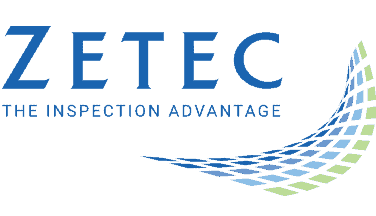Detecting HTHA Cracking Early Using Ultrasonic Technology

High temperature hydrogen attack (HTHA) crack inspection can be difficult to detect, so NDT personnel need an inspection discipline that can pinpoint infinitesimal cracking and other forms of defects in the making. However, not every NDT technique can detect precarious flaws like HTHA cracks. The best choice is phased array ultrasonic testing (PAUT) using advanced techniques like time of flight diffraction (TOFD) and live total focusing method (TFM) that can find HTHA cracks in a timely manner.
PAUT can find forms of cracking that typically escape exposure with other NDT measures while providing additional beaming angles and enhanced signal quality. This article will reveal why progressive UT campaigns like PAUT are among the best approaches that can find HTHA cracks without fail.
The Benefits of PAUT for HTHA Cracking Inspection
PAUT is the ideal UT method for the inspection of HTHA indications because it offers a wide array of customizable parameters for subsurface flaw detection. Here are some of the most important features of PAUT:
Beam Tailoring
PAUT offers a focused beaming feature with the assistance of 32 and 64-bit elements, which is crucial in finding small micro-fissures and methane annuls. Methane voids can be hard to find, as they are typically less than 0.0004 inches and are narrower than ultrasonic waves. The early-stage formation of methane voids also makes it harder for other NDT instruments to find deviations. However, the beam customization scheme of PAUT allows users to adjust the beam shape and focusing depths according to the flaw-finding mission.
Diverse-Angle Feature
With PAUT, operators can inspect a variety of angles from a single scan, dispelling frequent probe or wedge changes. With standard instruments, a user may receive skewed data that doesn’t capture the full rendition of subsurface cracking. The multiple angles that PAUT evokes will allow analysts to find HTHA cracks that may be fixed in an awkward position.
| Example: A fixed beam position from standard UT practice could result in the overlooking of flaws that run parallel to the beam. |
Fixed UT is a problem for HTHA campaigns because users can only work with a single beam. As a result, users will spend more time on additional testing schemes, whereas a single PAUT session can yield additional data with a single piece of instrumentation.
Strong Detection Abilities
Numerous industry experts believe that the solution for effectively detecting HTHA lies in deploying an efficient and robust inspection strategy. It should combine multiple advanced ultrasonic examination techniques for initial screening of material and for further assessment of suspected locations.
There are significant benefits of using encoded scanning techniques, especially when the quality of the recorded data is verified during the inspection. Encoded scanning reduces the probability of missing certain areas of the component. Also, the archived data can be used for future review and comparison with new data from similar or other inspection techniques as the component ages.
The use of carefully selected UT and phased array probes is a critical element in order to optimize the detection performance of the applied examination techniques.
Time of Flight Diffraction
TOFD is very effective for the detection, characterization, and sizing of embedded flaws, and also for accurate through-wall sizing of far-surface cracks. When used with high-quality TOFD probes featuring piezocomposite active elements, this technique provides rapid initial HTHA damage screening of base material and the heat-affected zone of welded regions.
For components with wall thicknesses over 50 mm, the TOFD technique becomes less effective because of the combination of beam divergence and long sound path. That’s where the TULA or TOFD Ultra Low Angle probe design offers an alternative for these thicker components.
The Total Focusing Method
The total focusing method (TFM) is an important asset during an HTHA inspection. In the new generation of high-end phased array units, it is now possible to process elementary A-scan signals “live” during the inspection and generate UT images with advanced focusing techniques.
The process results in nearly ideal focusing in each point of the image, and this improved image resolution can allow for better characterization and sizing of challenging damage like HTHA.
HTHA Cracking Campaigns with PAUT
HTHA campaigns are an easier process with PAUT, as it provides additional angles and varied beams that can find many types of cracking. PAUT can streamline testing campaigns and help personnel extract the best data in a single testing session. From there, companies can implement the necessary maintenance strategies that ensure welding integrity and preserve safety in the workplace and within public areas.
HTHA cracking is one of the hardest forms of defects to detect, and not every piece of NDT instrumentation is up for the job. Advanced methods like PAUT will strengthen the HTHA flaw-finding process, helping analysts find a minute crack in its infant stage. With the added capabilities of TOFD and live TFM, users can ensure they are deploying an efficient and robust inspection strategy recommended by many industry experts.
Zetec is a major supplier of UT instruments and PAUT probing options. Contact us today for a tailored guide on HTHA crack testing, including advice on the best forms of instruments to use during your inspection endeavors. To learn more, read about our on-demand webinar on Advanced Ultrasonic Technologies to Detect and Assess HTHA and view it today.
